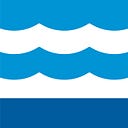Hot water-quality-testing summer
How we ensure our beach (water)bodies are ready for the official 2024 recreation season
Every summer, beginning Memorial Day weekend, the Sewer District samples Cleveland-area waterways to test for E. coli and releases beach safety information to the public: Every. Single. Day.
From May to September, Water Quality & Industrial Surveillance (WQIS) staff collect water samples at Edgewater, Euclid, and Villa Angela beaches and Euclid Creek, and takes them to our lab for E. coli testing and reporting to the public, helping beachgoers know what to expect all summer long.
Why E. coli? The Environmental Protection Agency designates E. coli as a fecal indicator bacteria, says WQIS Field Biologist Dr. Eric Soehnlen. High levels indicate that harmful pathogens that can cause illness are likely present in the water.
As important as it is to collect water for E. coli testing, though, WQIS does a lot more than that when they go out to the beaches and Euclid Creek. What do they do? They start by taking stock of conditions. Has trash washed ashore? Is the water calm or choppy? How many birds or other animals are pooping up the area? They record this, along with water temp, wave height, wind strength and direction, rainfall, and other weather conditions, because all these factors can affect E. coli.
Then, a hardy individual in waders takes a sterile bottle out to a three-foot depth and pulls a sample from roughly six inches below the surface (where a swimmer might dunk their head). They use a second bottle to collect water that’s tested on site for turbidity (cloudiness), conductivity (salt content), acidity (pH level), and algae. The sterilized bottle goes into an ice-filled cooler and off to the lab.
…where E. coli results are ready in 24 hours.
“I’m sorry, when?” I hear you say. Yep, samples incubate for a full day before being tested. Yet despite this, WQIS releases daily assessments of current water conditions. How? With predictive modeling. All the day’s info on weather and beach/water conditions gets plugged in, along with E. coli numbers from previous days, and the model produces a “prediction” of current beach safety levels.
That’s what WQIS shares with media, partner agencies, and the public via neorsd.org/beaches. Think of it as a weather forecast for water quality. Thankfully, predictions are largely accurate.
